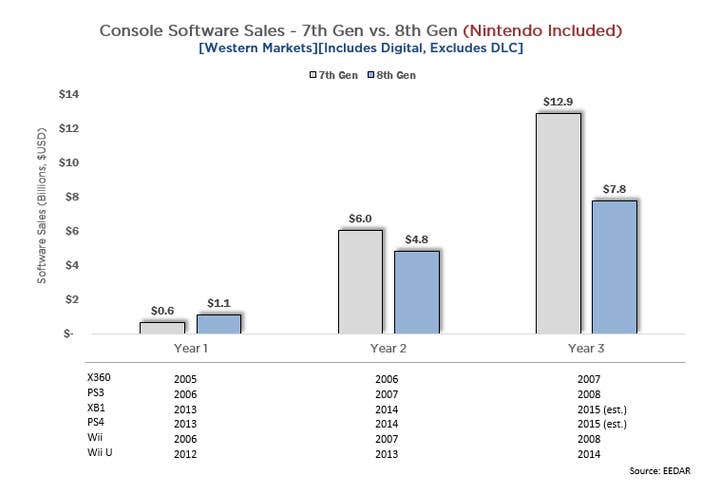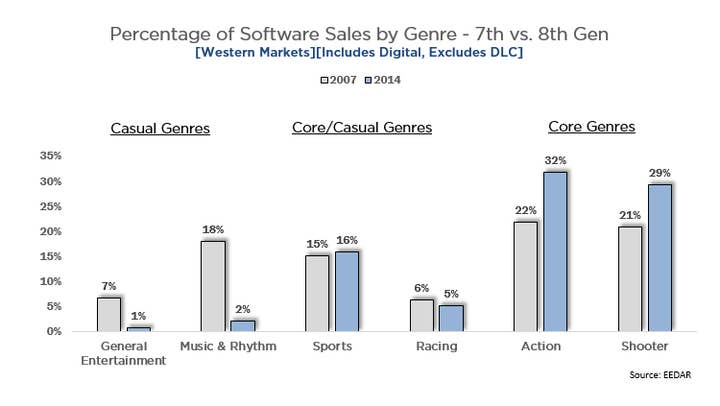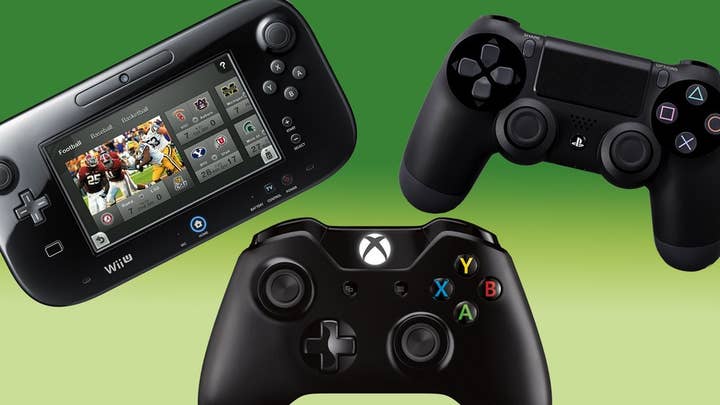Core console software sales are higher than ever - EEDAR
Living room gaming experience not going away any time soon, says EEDAR VP of Insights Patrick Walker
As the 7th console generation was coming to an end several years ago, there was much pessimism regarding the impending launch of the 8th generation. Just as 7th generation software sales were starting to lag, mobile gaming exploded, and PC gaming experienced a renaissance. It was easy to think that the console players were going to be going elsewhere to find their gaming entertainment by the time the new consoles hit the scene. However, the 8th generation consoles have had a successful launch. In fact, the Sony and Microsoft consoles are as successful as ever.
A comparison of the year over year console software sales suggests that the 8th generation is performing better than the 7th generation - provided you exclude the Nintendo consoles. The following graph shows physical and digital software sales for years 1 through 3 of each generation for the Xbox and PlayStation platforms.

The annual numbers take into account the staggered launch cycle, so year 1 comprises different sales years for Xbox 360 and PS3. The data shows that the Sony and Microsoft platforms have outperformed their 7th generation counterparts, especially in the first two years of the cycle. The 8th generation outperforms the 7th generation even in an analysis that excludes DLC, which now accounts for an additional 5-10 percent of software sales.
However, the picture is far different if we include the Nintendo platforms. The graph below shows the same data, but now includes the Wii and Wii U in their respective launch years.

The data shows how much the "Wii bubble" contributed to the explosive growth in software sales in 2008, the year the Wii really took off as a family and party device. This data corroborates a broader theme EEDAR has seen across our research - new, shortened gaming experiences that have added diversity to the market, especially mobile, have cannibalized the casual console market, not the core console market. People will find the best platform to play a specific experience, and for many types of experiences, that is still a sofa, controller, and 50 inch flat-screen TV.
The shift in consoles to core games is further exemplified by an analysis of sales by genre in the 7th vs. 8th generation. The graph below shows the percentage of sales by genre in 2007 versus 2014, ordered from more casual genres to more core genres. Casual genres like General Entertainment and Music over-indexed in 2007 while core genres like Action and Shooter over-indexed in 2014.

It has become trendy to call this console generation the last console generation. EEDAR believes one needs to be very specific when making these claims. While this might be the last generation with a disc delivery and a hard drive in your living room, EEDAR does not believe the living room, sit-down experience is going away any time soon.








